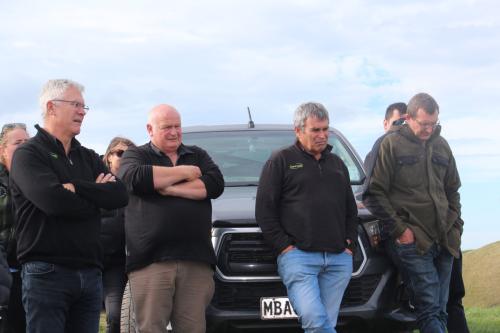Search results
Displaying 91 - 100 results of 1081
- Page… Rural Fire authority to see if there is a Fire Ban in place or if a Burn Plan is required Check Emergency Response Plan and maintain on person during burn Maintain a minimum distance of 50 meters between fire and other combustible material, … fire, resulting in injury, death and/or property damage Find out more WorkSafe Good Practice Guidelines “ Managing health & safety: a guide for farmers - Rural Fire ” …
- Video… AgInnovation 2021: New Science and technology to tackle facial eczema – Axel Heiser, AgResearch …

- Podcast… Animal Sourced Foods in Healthy and Sustainable Diets: Dr. Ty Beal, Research Advisor for the Global Alliance for Improved Nutrition …

- … This project aims to collate the relevant knowledge on ectoparasites as it relates to the New Zealand sheep and beef cattle sector and use this information to determine the current knowledge gaps and identify any emerging risks. … Background Ectoparasites such as lice, flies, ticks and mites are an important animal health challenge for our New Zealand livestock farmers. Ectoparasites are not the main … Ectoparasites in sheep and beef cattle …
- Page… Crop types and worms … worm challenge? What if there’s lots of grass through my crop? Learn about worm challenge on different forage types, and approaches to managing worms and drench inputs while animals are grazing crops. … quickly through their most vulnerable months. That said, the level of worm challenge on crops can vary substantially and monitoring is very important to safely reduce drench use while grazing young stock on these. Which crop is best? … always possible to say which forage will be ‘best’ – ‘Whatever green, leafy high ME crop will grow in your environment and under your management’ – is a pretty good guide. On some farms, crops may not be the best choice and a mix of other …
- Page… Agricultural and horticultural land occupy more than 40% of New Zealand, meaning there is significant pressure on farmers to manage the effects of their land use on water quality – and that includes managing stock near water. As well as the obvious action of keeping stock out of waterways this also … the combined impact of small improvements, such as higher water quality and better footing for stock. Improved stock health – stock drinking from troughs are less likely to come into contact with pathogens. Reduced stock losses – excluding …
- News… New Zealand red meat sector hopes EU-NZ FTA will boost links and co-operation …

- Page… Direct contact between a healthy animal and an infected animal is the most common way for pests and diseases to spread, therefore managing livestock movements and the introduction of new animals is particularly important. … NAIT and traceability The National Animal Identification and Tracing (NAIT) scheme links people, property and livestock in New … ostriches, emus, horses, alpacas and llamas. A separate ASD is required for pigs. Recommended practices Check the health status of stock before purchasing. e.g. the results of TB or Johne’s disease tests and farm of origin history. Only …
